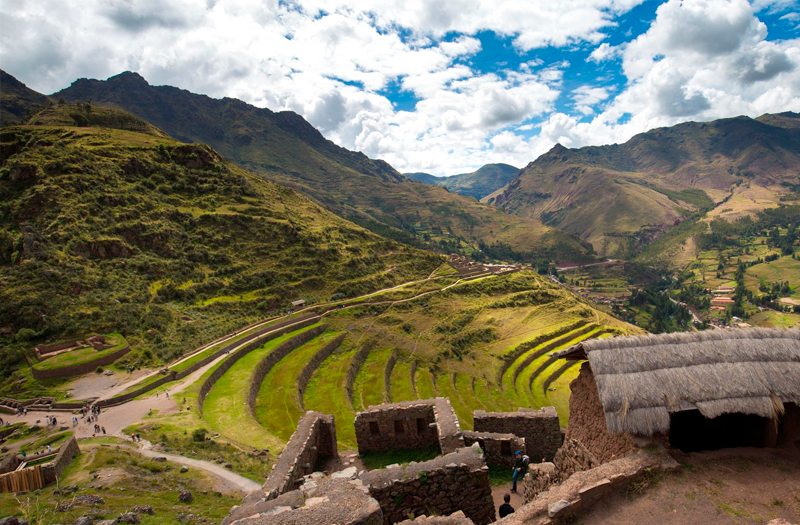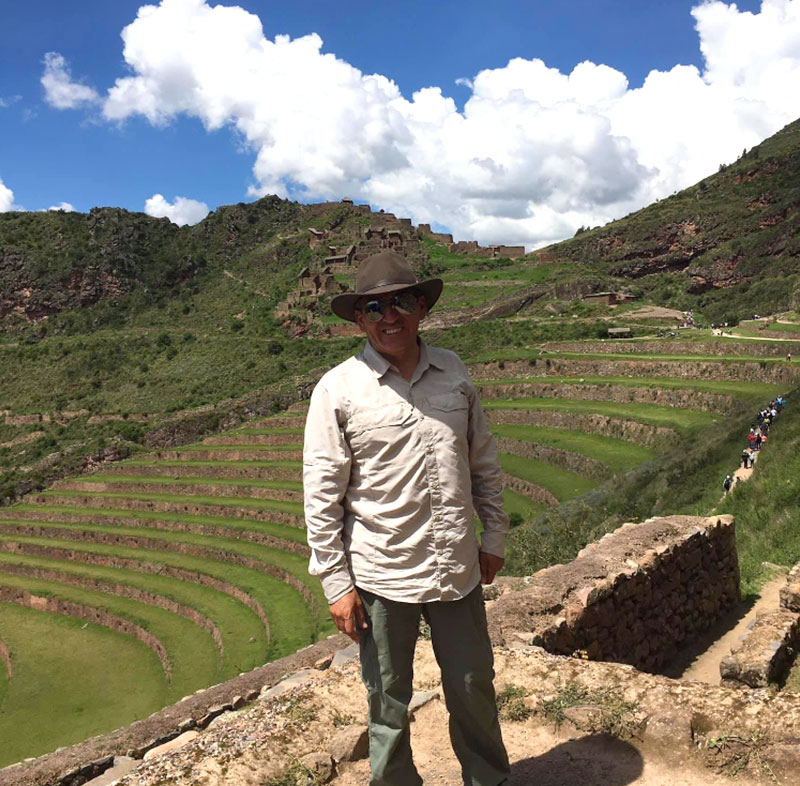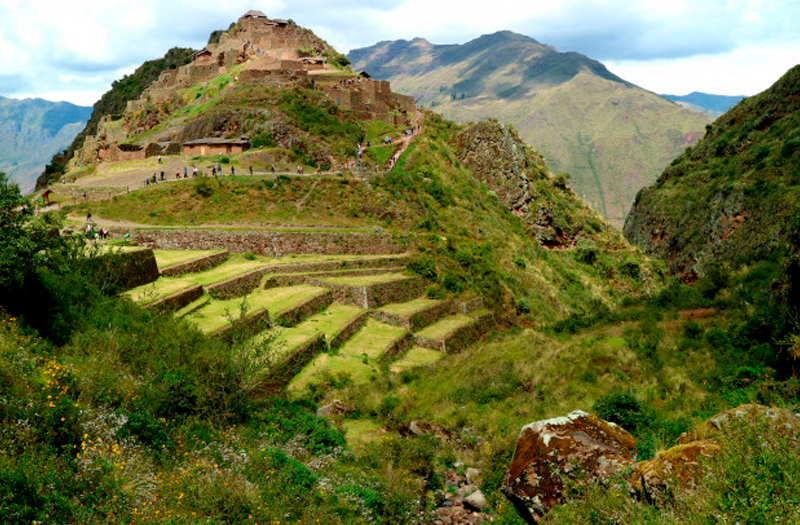Pisac Ruins – Archaeological Park
PROGRAM: Cultural, Archaeological.
DURATION: Customize
GROUP SIZE: 1 – 7
DEPARTURE: Every day.
FREQUENCY: All year
The National Archaeological Park of Pisac is made up of groups of archaeological remains, including platforms, aqueducts, paths associated with walls and portals, canalized water channels, cemeteries, bridges, etc. The extension covered by this group is 4 square km in area. On this area are the ruins occupying the hills, they are presented forming groups of complicated arrangement, while in others buildings isolated from the other groups are noted.
ATTRACTIVE
Acchapata Group of Platforms
Just 200 meters up from the town square of Pisac a beautiful set of platforms rises. This group is made up of 40 platforms, forming a kind of triangle with a vertex downwards, that is, the smallest platform is the first one that the visitor can see when he begins to ascend.
Torreones or Pucaras
In the citadel of Pisac we can count more than twenty towers and they are of two types: the towers and the watchtowers; the former are conical enclosures associated with construction water channels with well-carved and assembled parts, these look like pulpits attached to the mountain. The watchtowers are beautiful elevations, with a conical tendency, they are not enclosures, their texture is solid and their interior has a compact mass, plus its portion is a flat surface. The most important in its location is Qoriwayrachina.
Intiwatana neighborhood
It is the central neighborhood, home to temples and palaces, with a higher architectural quality, greater beauty in its walls, the venues are larger in relation to those of other neighborhoods. It has 3 levels to gain aesthetics and comfort, they modulated the buildings directed towards the main valley. In this place we can find: The central enclosure, the Intiwatana, the altar carved in volcanic gap, groups of liturgical sources, alleys and patios.
Tianayuc neighborhood
It is known as Tianayuc which translates to “having a seat” since in the interior patio there is a kind of sofa for two people, with a backrest and elbow pads made of stone. This neighborhood is small, with rooms whose doors open onto a central courtyard, plus an almost destroyed tower that dominates much of the K’itamayu gorge .
K’allaQ’asa neighborhood
It is the largest of the neighborhoods of the Inca city of Pisac, built on the top of the mountain the highest altitude of all the enclosures, its enclosures move on a sloping plane descending to the North. It has many rooms, steep slopes, turrets, a short tunnel 3 meters long; this neighborhood has impressive ravines on its sides.
Pisaq’a neighborhood
It is on the Chongo gorge, two hundred meters away from the Intiwatana neighborhood and at a lower height. This neighborhood was built by lowering the original level of the ground to modulate a plain. The plan of this neighborhood is semicircular obeying the shape of the mountain, this set consists of 23 rooms built with amazing order.
QanchisRaqay neighborhood
This neighborhood has many constructions, the houses are made of medium and small stones, the plan of the set is inclined, reaching the slope where the Chongo stream is. The entire neighborhood is like a sentinel controlling the northeast side of the city of Pisac.
SCHEDULE
- Check-in hours from 7:00 a.m. to 6:00 a.m.
- The cost of admission is included in the Tourist Ticket.
It includes :
- Pick up from the hotel.
- Private transport.
- Professional bilingual guide.
The tour DOES NOT INCLUDE:
- Tourist ticket (BTG).
- Meals.
It is recommended to bring:
- Photographic camera or video camera. (Optional)
- Sunglasses, sunscreen, caps or hats.
- Light clothing.
- Warm clothes (from May, june, july, august and september), for the others months rain layer.
- Snack.
- Extra money for shopping.
- Camera.
- Passport.






